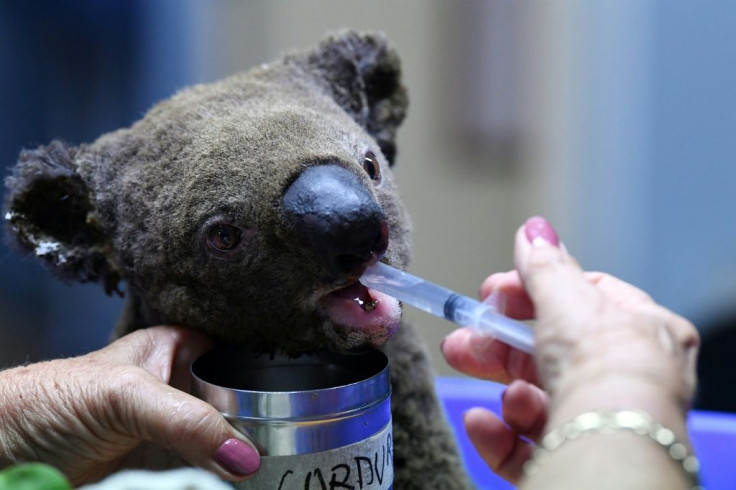Koalas In Trouble But Not 'Functionally Extinct', Experts Clarify

Australian bushfires have been ravaging the country’s east coast, from Sydney to Byron Bay, causing significant damage to property and wildlife. Over the past week, images of injured koalas have been making the rounds on social media, and news spread of the beloved creatures being “functionally extinct.”
However, experts clarify that while the koalas do need help, they are not “functionally extinct.”
‘Functionally Extinct’
The term “functionally extinct” spread this week along with news of the terrible plight of koalas affected by the bushfires in Australia. However, the term “functionally extinct” means that there are not enough individual members to produce the next generation.
In the case of koalas, they are currently considered “vulnerable" to extinction, which is one step from being endangered but still not functionally extinct. Furthermore, koala populations are not only confined to the area affected by the bushfires. Specifically, the bushfires ravaged about 1 million hectares of land, but the forest area where koalas can live is over 100 million hectares.
While many koalas did die during the recent bushfires, reports of the fire killing 80 percent of the koala population are untrue, and the recent deaths do not change koalas’ overall threat status. In fact, according to a professor of wildlife conservation at the University of Tasmania, Chris Johnson, the koala populations are declining but we are still not at the point where a single event can wipe out the remaining population.
Koalas Still Need Saving
That said, koalas are still facing a high risk of extinction even before the fires broke out. In 2016, there were about 329,000 koalas in Australia, but their populations continue to decline. Apart from bush fires, koalas are also being threatened by drought, dog attacks, chlamydia, land development, and food degradation.
What’s more, the fires that affected Australia recently appear to be more severe than before. Typically, the fires won’t even reach the tops of eucalyptus trees so the koalas clinging onto them are left unscathed. However, the recent koala deaths due to fire show that there is something different about the fires that koalas are no longer able to escape.
Experts say it is possible that the koala populations may not be able to make a comeback in the areas affected by the bushfires, but that does not mean that they have been completely destroyed and no longer suited to be occupied by koalas. After all, eucalyptus trees are some of the most fire-adapted plants on Earth. However, it will take years of monitoring to determine how the areas will recover.
For now, it is imperative to rescue treat the koalas affected by the fires and to protect their habitats, especially since a lot of the land they reside in remains unprotected.
© Copyright IBTimes 2025. All rights reserved.






















